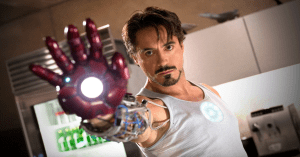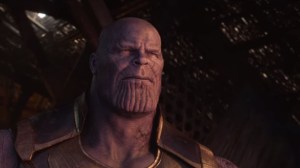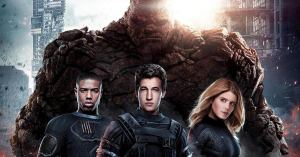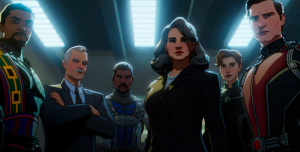Ant-Man and sequel Ant-Man and the Wasp have already established a simplistic way to integrate super-group the Fantastic Four into the Marvel Cinematic Universe fold: the Quantum Realm.
Videos by ComicBook.com
The mysterious alternate dimension, already inspired by the works of Fantastic Four co-creators Stan Lee and Jack Kirby, is the mysterious realm that trapped the long-missing Janet van Dyne (Michelle Pfeiffer) before she was rescued by the efforts of husband Hank Pym (Michael Douglas), daughter Hope (Evangeline Lilly), and partner Scott Lang (Paul Rudd).
Her time in the alternate dimension left her endowed with quantum energy — the same energy Ava Starr, a.k.a. Ghost (Hannah John-Kamen), aimed to extract as a means of staying alive after her own exposure to the Quantum Realm granted her powerful, but unstable, intangible and phasing abilities.
As a side effect to her superhuman abilities, Ava suffered from “molecular disequilibrium” — an affliction that saw every cell in her body constantly tearing apart and subsequently re-stitching in an unending, hellish cycle. Janet, who had undergone her own altered physiology following decades spent in the Quantum Realm, directly transferred a portion of quantum energy into the breaking-apart Ava, saving her life.
When Marvel’s first family debuted in the pages of a 1961 comic book, it was in the midst of the space-age and the Cold War: the foursome aimed to beat the Soviets into space, where the four were bombarded by cosmic rays, leaving them irreversibly changed with fantastic superhuman abilities.
Modern comics altered the four’s origin — an updated iteration of the team traded space for an alternate dimension in the pages of Ultimate Fantastic Four, where a younger version of the four gained their powers from the “N-Zone” — an origin story that was adapted in 2015’s oft-derided reboot, Fant4stic.
When the Fantastic Four debut in Marvel Studios’ shared universe, their origin — now already explored in modern times in two failed movie series — should be glossed over and left unseen, the same approach Marvel used when handling the already-seen-it-twice and well-known origin tale of Spider-Man (Tom Holland), who boarded the universe in Captain America: Civil War as an already-established superpowered vigilante.
The Quantum Realm, having already granted powers to the original Wasp and Ghost, would then suffice as a suitable explanation for how these four scientists-slash-explorers were transformed into Mr. Fantastic, the Invisible Woman, the Human Torch, and the Thing. Pym already unlocked the door, so to speak, leaving room for big-brained scientist and colleague Reed Richards to further develop that specific field of scientific research — leading to the birth of the Fantastic Four.
Disney finally won a $71.3 billion bid to acquire 21st Century Fox, who have long held the screen rights to properties Fantastic Four, X-Men, and Deadpool — all IPs Disney-owned Marvel Studios intends to fully integrate into the MCU, already home to the Avengers and the Guardians of the Galaxy.
Like Spider-Man before them, the four should get a hit-the-ground-running approach, ignoring the well-tread origin story and waving it away in favor of a family-focused dynamic in the same vein Marvel’s first Spidey solo, Spider-Man: Homecoming, told an all-new story that side-stepped a spider bite and Uncle Ben.





